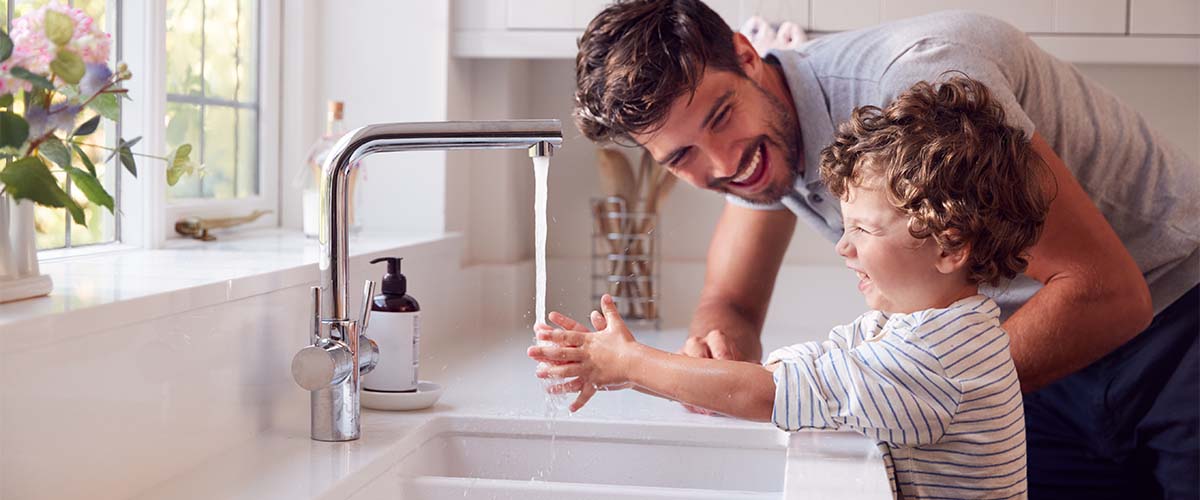You are getting ready to go to work or finish a few chores, and mid-shampoo, the water suddenly turns to ice. The fix isn’t always a new heater—it’s matching the size to your crew and your habits. I’ve spent over 20 years in Winston-Salem crawlspaces with PF Plumbing, and I’ve seen every undersized tank and every “why didn’t someone tell me this sooner” installation. When the unit fits the home, it just works: quiet, steady, no hollow thunk from the tank, and no “wet dog” hot water. I’ll walk you through how I size heaters, how to tune what you’ve got, and figure out what size water heater you need without burning a Saturday.
Ideal Water Heater Sizes for Homes
Think of your heater like a hot-water budget. Showers, laundry, and dishes—each “spends” some. A typical 40–50-gallon gas tank can handle two people showering back-to-back and a dishwasher cycle without issue. Four people with a big soaking tub? You’re happier in the 50–60 range, sometimes 75 if you love long, hot soaks. Electric tanks recover slower than gas; the first hour rating (FHR) is the water heater size—how many gallons of hot you get in that first push. For precise calculations, contact us and we can use our sizing calculator to match your households specific needs.
Dishwashers and modern washers often preheat or use less energy; they’re gentler on the budget than older models. If you cook a lot and hand-wash greasy pans, a 120°F setpoint keeps your skin safe while still cutting through crud with a dab of detergent. Add a thermostatic mixing valve, and you can store a bit hotter for capacity, while delivering safe water to taps. The official guidelines from the Department of Energy provide additional sizing recommendations.
How to Check If My Water Heater Size is Working Right?
Running out too fast? Start simple. Check the thermostat—bump it 5° and try again tomorrow. Swap in a 1.8 GPM showerhead and you’ll stretch your budget without feeling punished. Stagger laundry and showers. Insulate the first 10 feet of hot pipe; it’s cheap and helps.
Electric tank lukewarm? One faulty element or thermostat can cause that. Kill power at the breaker, pull the access panels, and test with a multimeter. Make sure the dip tube isn’t broken—that sends cold to the top and fakes you out. Sediment can blanket the bottom; drain a few gallons. If it’s sandy or gray, flush until clear.
I always check the aerator first. Low flow at the faucet can feel like no hot water at all.
Maintaining and Cleaning Your Water Heater
Regular maintenance keeps capacity where it belongs. For tanks, drain a bucket monthly and perform a full flush yearly until the water runs clear. That crunching, popcorn sound? Sediment. It steals heat. Replace the anode rod every 3–5 years (more often with hard water) to keep the tank from eating itself. If hot water smells like rotten eggs, a different anode (aluminum-zinc) usually fixes it.
Tankless folks: vinegar flush once a year keeps the heat exchanger happy. Clean the inlet screen, and don’t forget the little air filter some models hide up top. Heat pump hybrids need their filter vacuumed, too.
Set the temp around 120°F. Your hands and energy bill will thank you. Test the T&P valve with care—just a quick lift to be sure it moves and reseats. If it dribbles after, it’s time for a new one. Here’s what they don’t tell you: an expansion tank is cheap insurance; it protects valves and maintains stable pressure during heat cycles. In Ardmore once, a scaled-up tank burped and spat rusty spray when we cracked the drain—ceiling freckles for days.
When Should You Contact a Professional?
If there’s any sign of gas odor, backdrafting, or scorch marks around the draft hood, that’s not a DIY Saturday. Same for a tank sitting in a sagging pan or leaving rusty trails down the side—tanks rupture fast once they start weeping. If the T&P valve discharges more than a teaspoon after heating, you may have excessive pressure or no expansion control. Most homes I test run about 50 PSI.
Older homes in West End sometimes tuck heaters into tiny closets with sketchy vents; we fix clearance, add proper combustion air, and install a pan drain so attic leaks don’t ruin plaster ceilings. Hard water builds scale that can cook elements and tankless heat exchangers; when you’re replacing those too often, we install a conditioner and a service valve kit for quick descaling.
Once found a tiny salamander in a crawlspace pan after a storm. Alive. Relocated him. Then we strapped the heater, corrected the flue, and upsized to match two baths and a deep tub.
Frequently Asked Questions About Water Heater Sizes
What size water heater do I need?
Roughly: 2–3 people = 40–50 gal, 3–4 = 50–60, 5+ or a big tub = 60–80. Gas recovers faster than electric.
Should I get a tank or a tankless water heater?
Tankless is great for long runs of hot water and small spaces; size by gallons-per-minute at a 60–70°F rise. Tanks are simpler and cheaper upfront.
Can my water heater handle simultaneous use?
Two showers and a dishwasher typically need 4–6 GPM tankless capacity, or a 50–60-gal tank with good recovery.
What is the ideal temperature for a water heater?
Around 120°F for safety. Use a mixing valve if you store hotter to boost capacity.
Do I need an expansion tank?
If you have a pressure-reducing valve or backflow preventer on the main, yes—protects valves, fixtures, and your heater.
If you’re still shivering mid-shampoo, contact our plumbing professionals. We’ll match the unit to your life, not the other way around.

